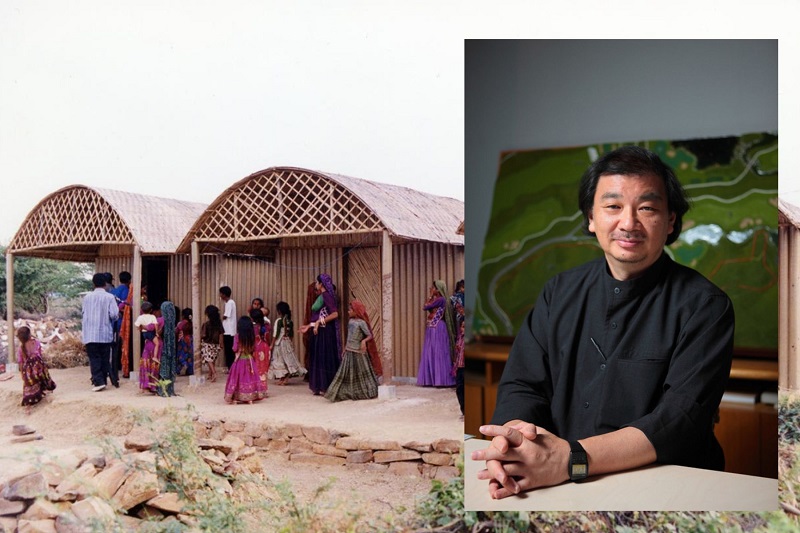ISABEL RUBIO ARROYO | Tungsteno
As a child, Shigeru Ban liked to collect pieces of wood to build small structures. He knew he wanted to be a carpenter. Eventually, his passion turned to architecture and he swapped the pieces of wood for paper and cardboard tubes. With these he has built many shelters and temporary dwellings to respond to extreme and devastating situations caused by natural disasters. Among his most famous works are the Centre Pompidou-Metz in France, the Japanese pavilion for Expo 2000 in Hannover, Germany, and emergency shelters for the 2010 Haiti tragedy.
Cardboard tubes instead of bricks
"In 1986, long before people started talking about ecological and environmental issues, I started testing the paper tube so that I could use it as a building structure," the 66-year-old Japanese architect recounted in a 2013 TED talk. As he explained, it turned out to be much stronger and easier to waterproof than he expected. So much so that in 1990 he built his first temporary building out of paper. He used 330 tubes with a diameter of 55 centimetres and 12 tubes with a diameter of 120 centimetres.
That was just the beginning of what Ban would go on to achieve. Years later, he won a competition to build a Pompidou Centre in the French city of Metz. "Because I was so poor, I wanted to rent an office in Paris, but I couldn't afford it, so I decided to take my students to Paris to build our office on top of the Pompidou Centre in Paris by ourselves. We stayed there for six years without paying any rent," jokes the architect, who has always been interested in using low-cost, local and reusable materials.
Shigeru Ban is a leading figure in the use of cardboard and paper in the field of architecture. Credit: TED
Emergency shelters in natural disasters
By the end of 2021, the number of forcibly displaced people worldwide reached over 89.3 million, according to the United Nations. "In the 21st century, natural disaster (sometimes due to climate change) can also force people to seek refuge in other countries," the agency says. Many of these people are in need of temporary shelter, Ban says. "But there are no architects working on this because we are too busy working for the privileged," Ban said in his TED talk.
It was this kind of thinking that had got him involved in rebuilding temporary housing in disaster areas years earlier. "When Ban discovered that the two million refugees from the 1994 Rwandan Civil War were forced to live in terrible conditions, he proposed his paper-tube shelters to the United Nations High Commissioner for Refugees and they hired him as a consultant," explains the Hyatt Foundation, which organises the Pritzker Prizes.
As well as being an economical and environmentally friendly option, cardboard tubes offer a surprising ability to withstand structural loads. After the Great Hanshin Earthquake in Japan in 1995, the architect built the "paper log house" for former Vietnamese refugees who could not live in the temporary housing provided by the government. After another major earthquake struck Canterbury, New Zealand, in 2011, Ban erected the Cardboard Cathedral as a symbol of the rebuilding of the city of Christchurch.
Ban designed the Cardboard Cathedral in Christchurch, New Zealand. Credit: Stephen Goodenough / Hyatt Foundation
In 2014, Ban won the world's most prestigious architectural awards, the Pritzker Prize. He has become one of the leading figures in the use of cardboard and paper in the history of architecture. If there is one thing he is clear about, it is that both materials can be used to create strong structures: "Even a building made of paper can be permanent, as long as people love it. Even a concrete building can be very temporary if it is made to make money."
Tungsteno is a journalism laboratory to scan the essence of innovation.
